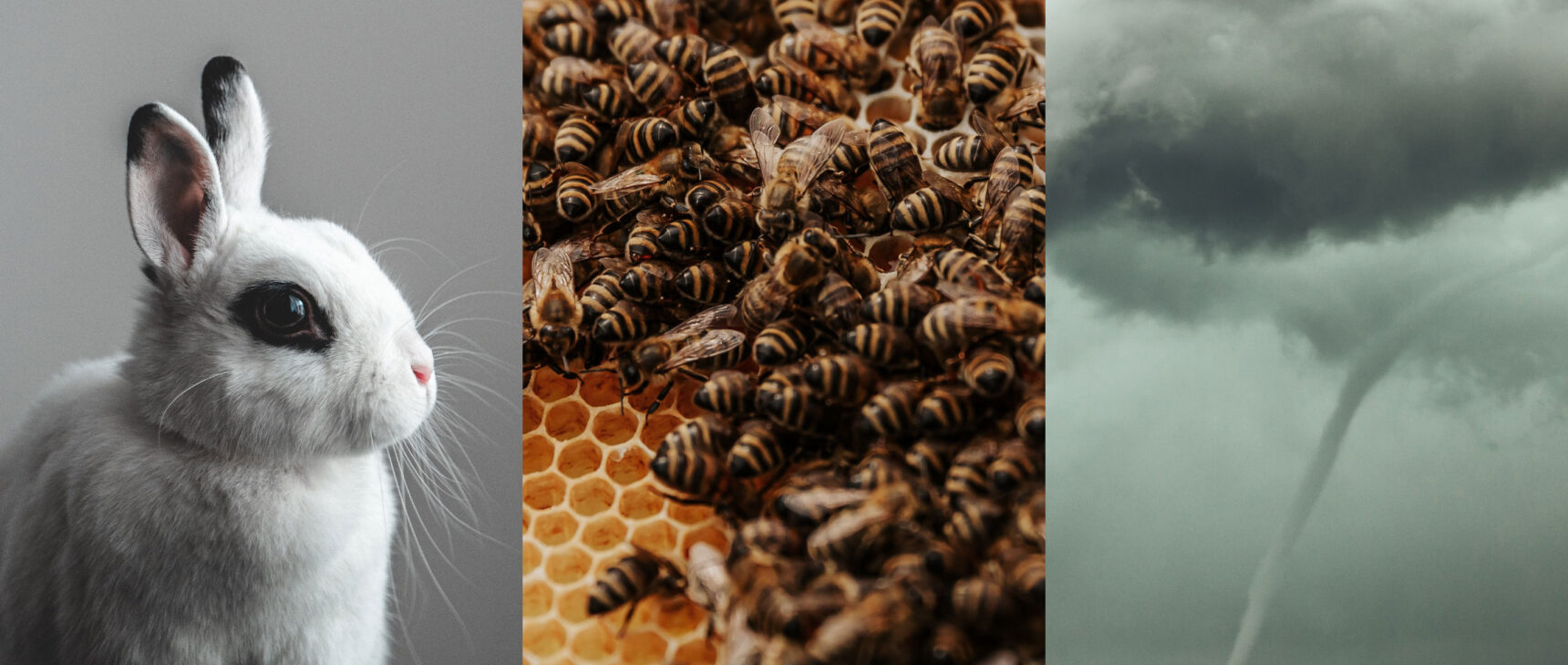He Found ‘Islands of Fertility’ Beneath Antarctica’s Ice
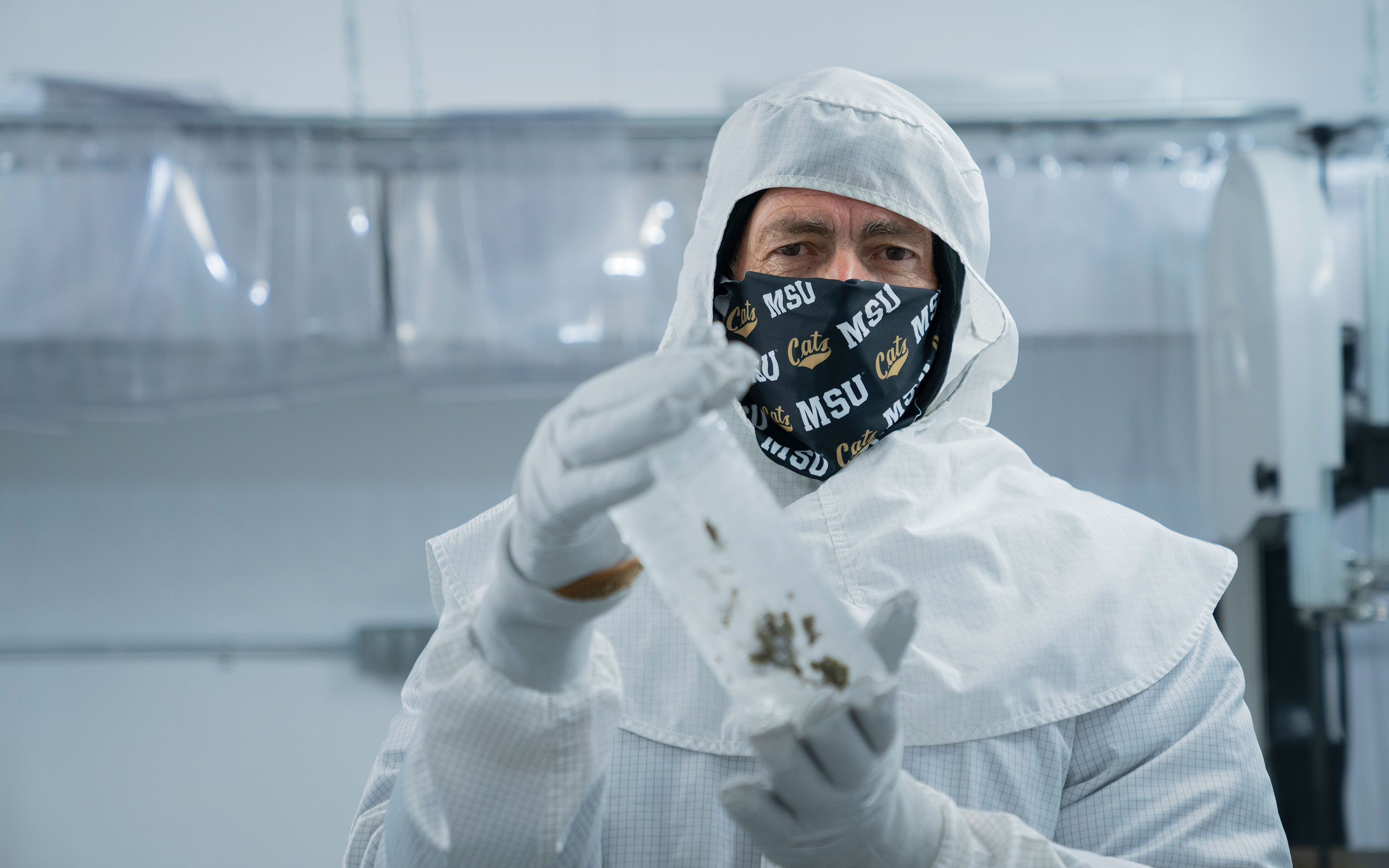
The microbial ecologist John Priscu, one of the foremost experts in the study of microorganisms that survive in frozen environments, stands in his sub-zero laboratory at Montana State University.
Reid Morth for Quanta Magazine
Introduction
When John Priscu was growing up in Las Vegas, his father, a metallurgist in the aerospace industry, encouraged his son to spend time outdoors. The younger Priscu listened: He played soccer at the youth, collegiate and semi-pro levels. He studied the Colorado River while getting a master’s degree in biology at the University of Nevada, Las Vegas, rafting through the Grand Canyon more than a dozen times in the process. Now, as a self-professed “adrenaline junkie” in his late 60s, he races cars — a Porsche 911 is his current vehicle of choice — when he’s not mountain biking (and dodging grizzly bears) or riding his Harley-Davidson. He started scuba diving when he was 16; when he’s in the mood for loftier views, he sometimes goes bush piloting in remote wilderness areas.
But his greatest boast as both a scientist and an adventurer is that he has explored the world of ice and snow more extensively than almost anyone on this planet in a decades-long quest to find out whether life can thrive in places long written off as barren wastelands.
Priscu, a regents professor of polar ecology at Montana State University, got his first taste of winter more than 40 years ago after entering a doctoral program at the University of California, Davis in microbial ecology. The field was so underpopulated in those days, it didn’t even have its own journal. Most ecologists of the era studied respectable animals like birds, bears or wolves, not lowly bacteria. But Priscu adopted the more broad-minded view that we shouldn’t discriminate against creatures just because we can’t see them. If anything, that might be a reason to scrutinize them more closely.
His graduate research focused on the glacially carved lakes surrounding California’s Mount Shasta — a setting that gave Priscu, after a childhood in the Mojave Desert, full-on exposure to snow and ice. He took up skiing to get around in wintry months, hauling sleds loaded with food and gear to and from the field site where he lived in a tent four months out of the year. He also put his diving experience to use, cutting into the ice of the alpine Castle Lake and then swimming to the bottom more than 100 feet below to collect sediment samples.
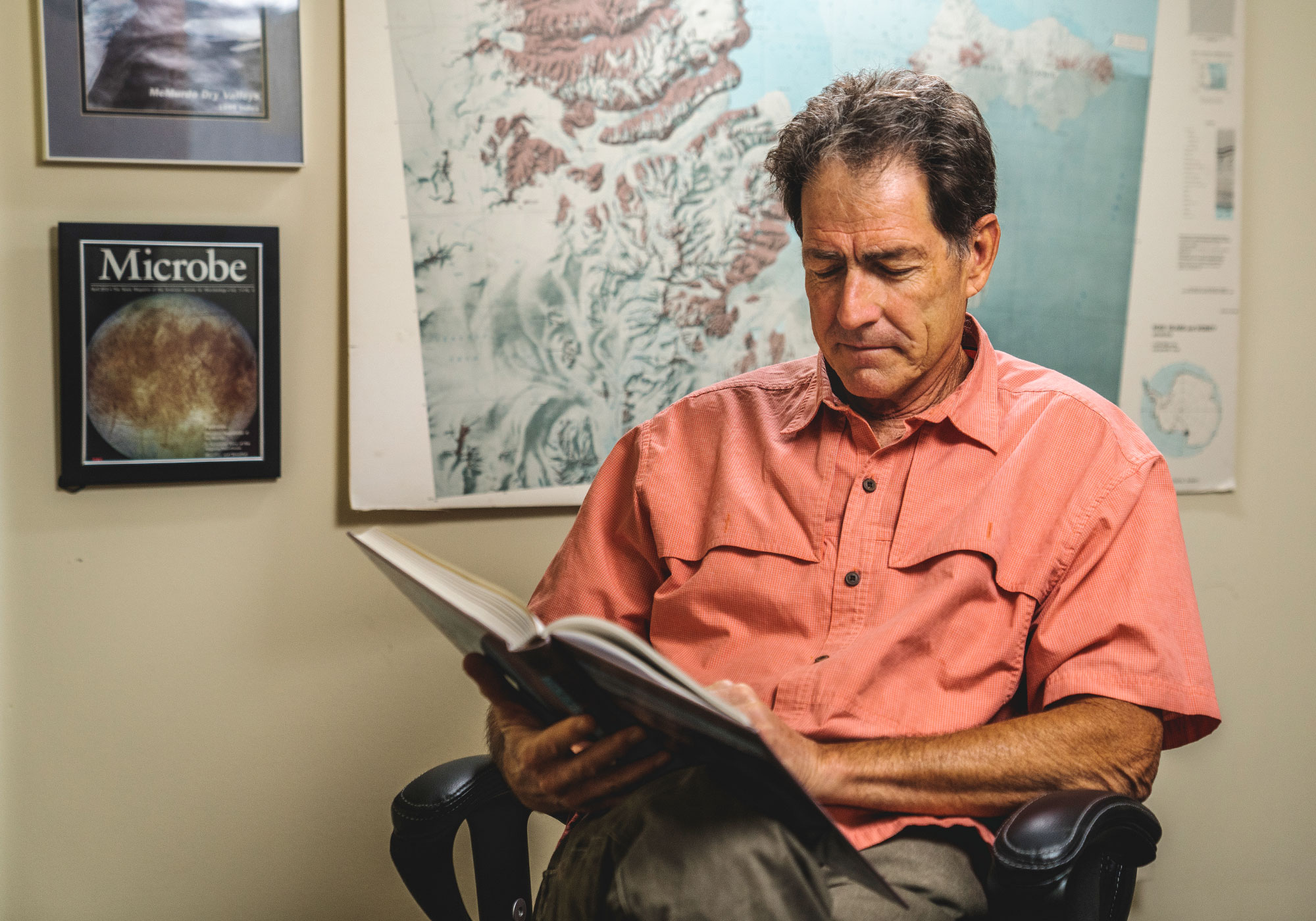
Priscu in his office at Montana State University.
Reid Morth for Quanta Magazine
After getting his doctorate in 1982, he hoped to continue his limnological studies at Lake Titicaca, 12,500 feet up in the Andes Mountains. However, a New Zealand scientist landed the research spot he was vying for, so Priscu took that person’s position in New Zealand instead. In 1984, Priscu headed back to the U.S. to join the faculty at Montana State because of its proximity to snow and ice, but his stay was soon interrupted when funding came through for a proposed study of photosynthesis beneath the permanently ice-covered lakes of Antarctica. Priscu has been to Antarctica 35 times, missing only one year since 1984 (when his daughter was born in 1988), and those decades have been eventful.
Priscu led one of two research teams that in 1999 announced the presence of biological organisms in an ice formation atop subglacial Lake Vostok, the world’s third-largest freshwater body, which lies more than two miles below the East Antarctic ice sheet. It was a momentous finding, though there was some skepticism due to concerns that the recovered samples might have been contaminated with cells from elsewhere, as well as criticism of the team’s decision to analyze ice from immediately above the lake’s surface rather than liquid water from the lake itself.
But doubts were laid to rest in 2013 when Priscu’s team drilled through about 2,600 feet of ice and found a flourishing ecosystem within the actual waters of Lake Whillans, another of Antarctica’s more than 400 subglacial lakes. Last year, his group sampled nearby Lake Mercer at a similar depth under the ice, achieving similar results.

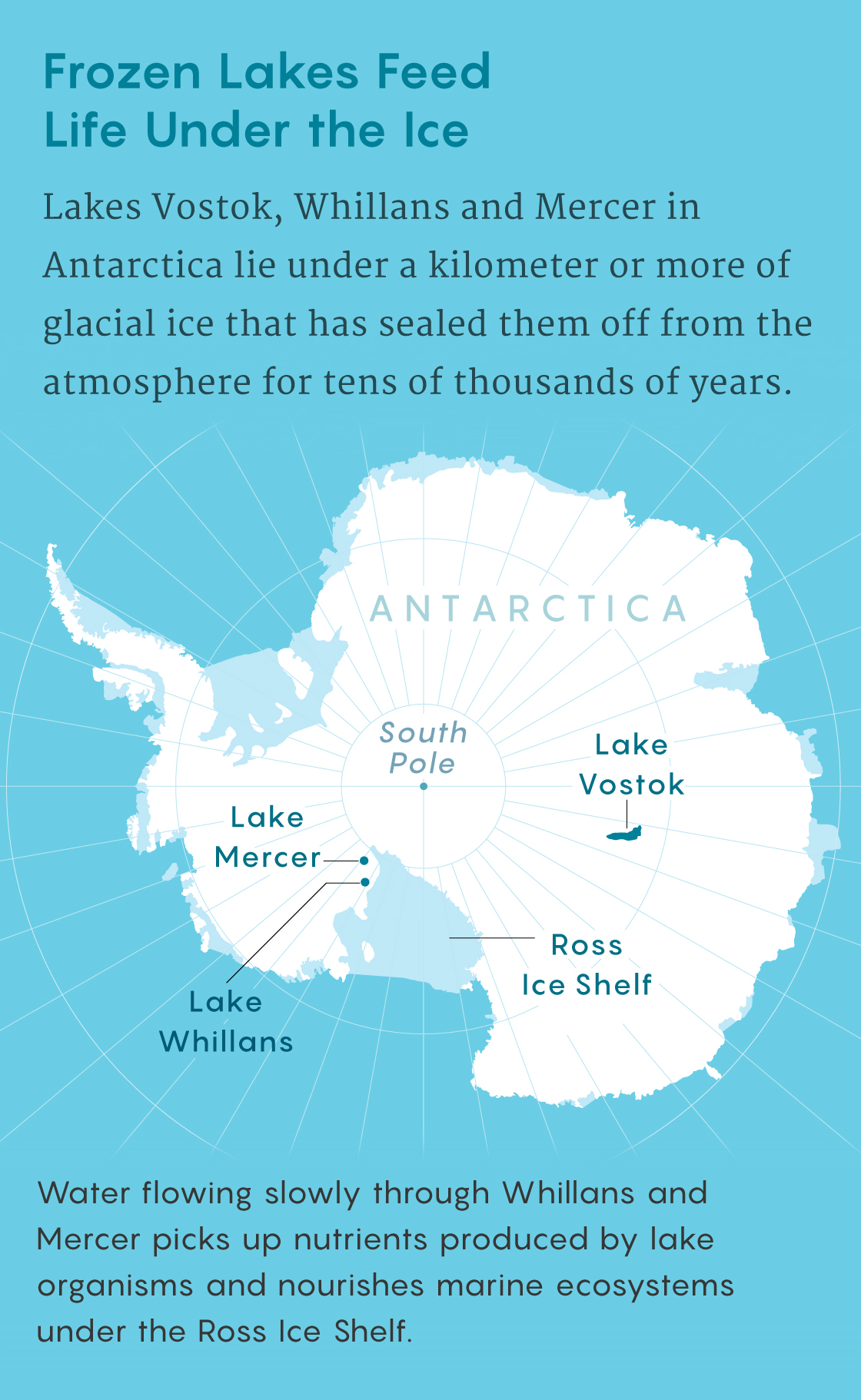
Samuel Velasco/Quanta Magazine
Priscu’s success in finding life in ice and water sometimes miles below the Antarctic surface has helped transform our view of the southernmost continent — a realm that until two decades ago was barely considered part of the biosphere. Now he’s devoting some of his attention and expertise to other icy bodies in the solar system where, someday, history may repeat itself.
In Barrow, Alaska, the northernmost point in the United States, Priscu has worked with Jet Propulsion Laboratory (JPL) engineers to develop a buoyant rover that could explore the ice-covered oceans of Jupiter’s moon Europa and Saturn’s moon Enceladus. During several trips to Greenland, he and NASA researchers tested a drill that can cut through hundreds of feet of ice, measuring organic matter and other “biosignatures” as it goes down. A tool like this might soon be deployed on Mars and eventually on Europa.
Priscu has also been to the Himalayas several times, including Mount Everest, to analyze the bacterial content of ice cores collected at various elevations. “I can’t say no to something that’s new and exciting,” he said.
Quanta Magazine spoke over the phone with Priscu in June at his home in Bozeman, Montana. The interview has been condensed and edited for clarity.
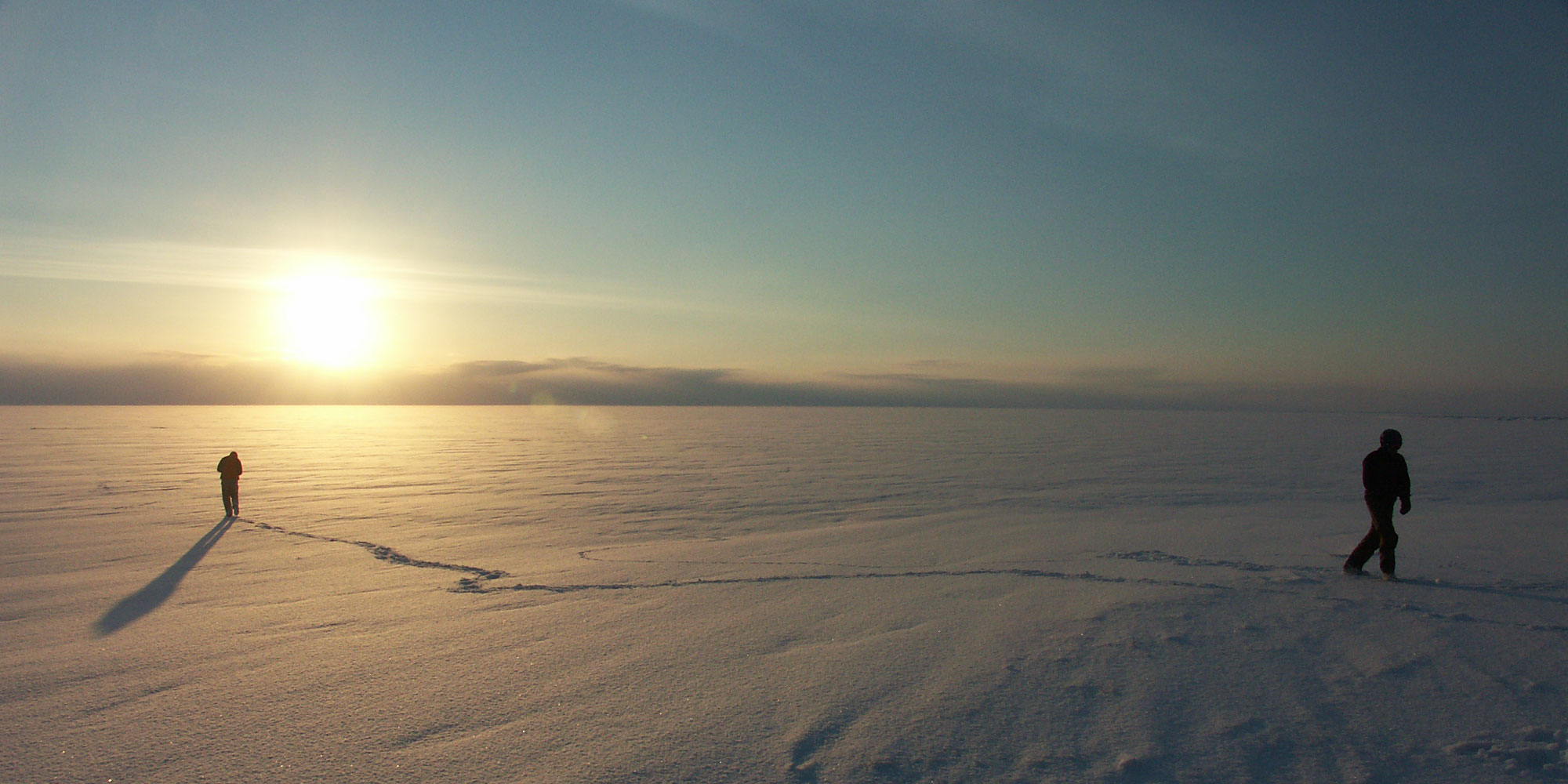
Polar ecology researchers on the ice near Barrow, Alaska.
Courtesy of John Priscu
Describe how you felt upon arriving in Antarctica for the first time.
We flew in from New Zealand on a Hercules military ski-equipped aircraft. There are two round little windows just eight inches in diameter in back where the passengers sit. I looked through one and sat there in awe as the continent unveiled itself before me.
I’d read some of the books by early explorers like Robert Falcon Scott and Ernest Shackleton. Scott’s journals referred to Antarctica as a godawful place with nary an animal around that is alive. But we’ve always equated life with water. “Follow the water” is sort of the mantra. And when you look out the window and see all that ice, that’s 70% of the fresh water on this planet sitting on the fifth-largest continent. So I said to myself: “There can’t be this much real estate on Earth that’s dead.”
You investigated Antarctica’s surface lakes as your first project and still study them today. What’s held your interest for so long?
There are dozens of lakes in the McMurdo Dry Valleys, and I’ve studied just about all of them. Some are large ponds, and others are major lakes more than 270 feet deep. We know that ice has covered these lakes for more than 100 years. Most are covered by ice that’s 12 to 20 feet thick, but we’ve drilled down more than 40 feet into some lakes and never hit liquid water. Beneath the ice, we’ve found lake ecosystems that live in the twilight zone. It’s dark, but in many lakes, a tiny percentage of the sun’s radiant energy can get through the ice, and that’s enough to sustain photosynthesis and life, even though there’s only four months of polar summer.
In some cases, we found photosynthetic bacteria that were literally frozen in the ice — totally stationary and yet they could still carry out photosynthesis. Somehow they’ve managed to fine-tune their machinery so that it’s perfectly suited to conditions in that ice.
We’ve also seen different microbial species form “syntrophic” relationships. Basically, they’re sharing resources to get through tough times. Microbes do this by staying very close to each other, less than a micrometer apart, which makes the transfer of metabolites relatively easy.
How challenging is it to work in these cold, extreme situations?
One thing about working in the Dry Valleys is that you can get these huge winds, 70-80 miles per hour, coming off the polar plateau. Sometimes when you’re out there, you have to tie yourself to rocks and crawl around on your stomach to keep from getting blown away.
On that first trip in 1984, I stayed at Scott Base, New Zealand’s research facility. At some point, I visited the American scientists at McMurdo Station, which is a 20- to 30-minute walk (when the winds aren’t too bad). I took up their offer to join the “life in sea ice” program for the next two years. You do a one-hour stint scuba diving in 28-degree-Fahrenheit water, which really beats you up, and then you’re up all night in the lab looking at what you’ve found. It turns out there is quite a concentration of microbial life in the bottom of sea ice. I spent a lot of time on icebreakers in February 1987 looking for life in the ocean below the Ross Ice Shelf, which is almost 200,000 square miles, about the size of France, and more than 2,000 feet thick. But in 1988, I went back to the lakes in the Dry Valleys and started leading my own research teams.
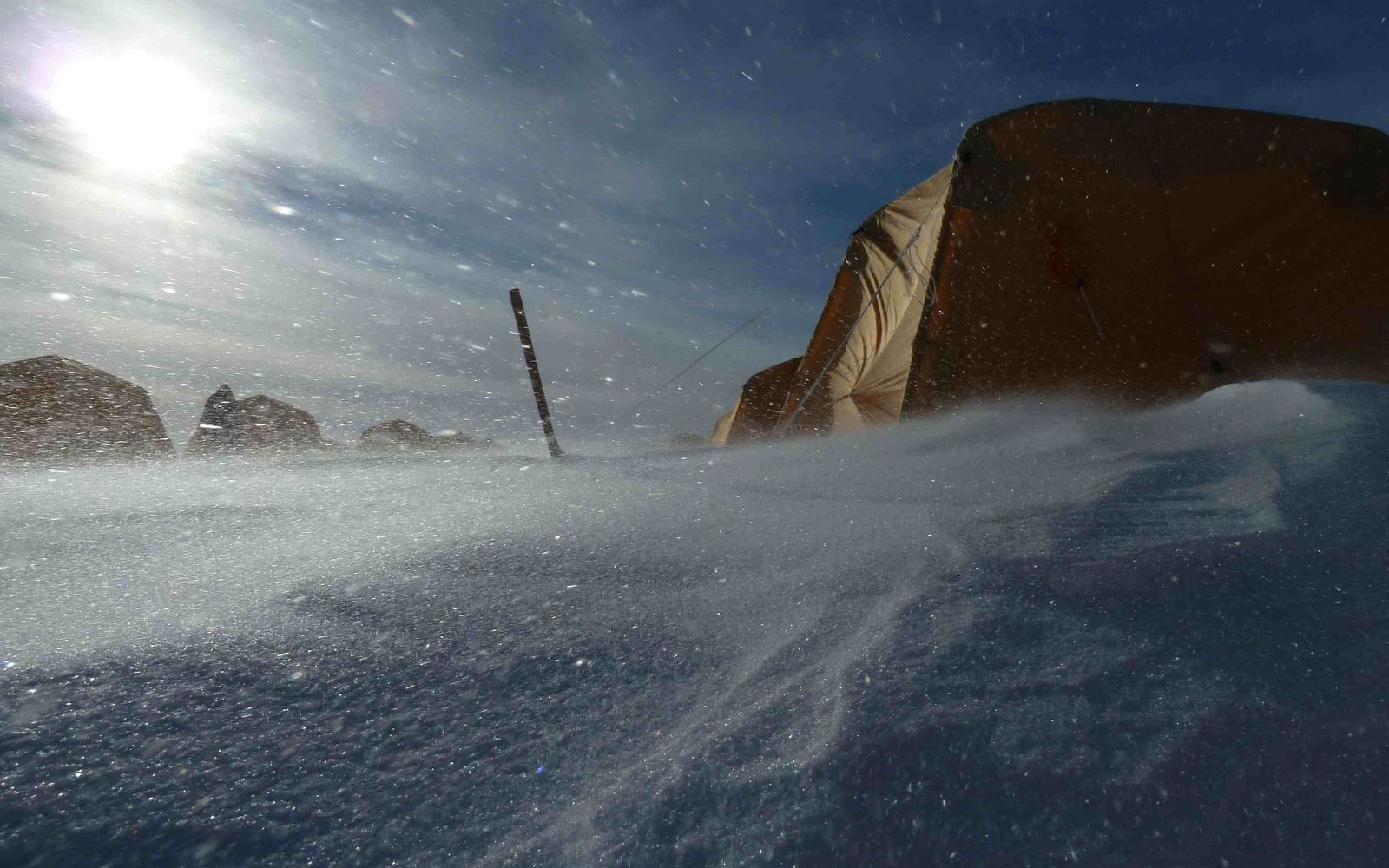
The brutal winds and cold of Antarctica make expeditions onto the ice treacherous.
Courtesy of John Priscu
What’s it like staying in Antarctica over the winter?
Altogether, I’ve spent the fringes of three winters there — in 1991, 1995 to 1996, and 2007 to 2008. It’s mostly dark, of course, leaving you only a couple of hours of twilight to work in, and obviously pretty cold. One winter, minus 45 degrees Fahrenheit was the warmest it ever got for an entire month. Our main objective was to sample liquid water, and at those temperatures you don’t want to get it on your skin.
But this is why I’ve done these winters: We’re figuring out how these ecosystems function with so little energy input and wanted to get a year-round look. One thing that’s keeping them alive is relic organic matter deposited from the ocean in an earlier geologic era. Metabolisms are so low that these organisms can survive by consuming this ancient food matter.
By measuring the light and biological activity, I was able to build a mathematical model. Then all I had to do was put light meters into the lakes to estimate the amount of photosynthesis going on. We know that some lakes are producing 10,000 kilograms of carbon per year — orders of magnitude lower, in terms of biomass production, than is typical of lakes that aren’t covered by ice — but they’re still eking out an existence. That’s been a big advance for us.
How did you get involved with the exploration of Lake Vostok?
In 1996, a group headed by Russian scientists published a paper in Nature about a giant freshwater lake in Antarctica. The Russians had set up a station in Vostok — an isolated spot about 12,000 feet in elevation — and started looking at ice cores for the climate record. They kept drilling down and announced in 1999 that they’d hit a different kind of ice that looked like frozen lake water. (We call it accretion ice — a layer of lake water about 650 feet thick that froze on contact with the bottom of the much colder ice sheet.) But they didn’t go all the way to the lake and get a direct sample because scientists were worried about contaminating it. There was also a danger of a possible explosion or “blowout” from pressurized gas that had accumulated in the lake during the 15 million years it’s been beneath the ice.
The U.S. got a piece of the accretion ice from 11,800 feet below the surface, which was still 490 feet above the lake. I didn’t have much ice to work with. The sample I got was roughly 20 inches long and about 3.5 inches in diameter, but that piece of ice changed my life. We took it to the lab and examined it under the cleanest conditions, using a scanning electron microscope to look at cells and minerals, and an atomic force microscope to examine cells at the atomic level. And bingo, we started seeing microbes. Extrapolating from the accretion ice, we estimated bacterial concentrations on the lake’s surface of about 100,000 cells per milliliter — about one-tenth that found in the ocean or the average non-frozen lake. We presented our DNA sequencing data in a 1999 Science paper, back to back with a paper [by another team] that presented metabolic data for those microbes.
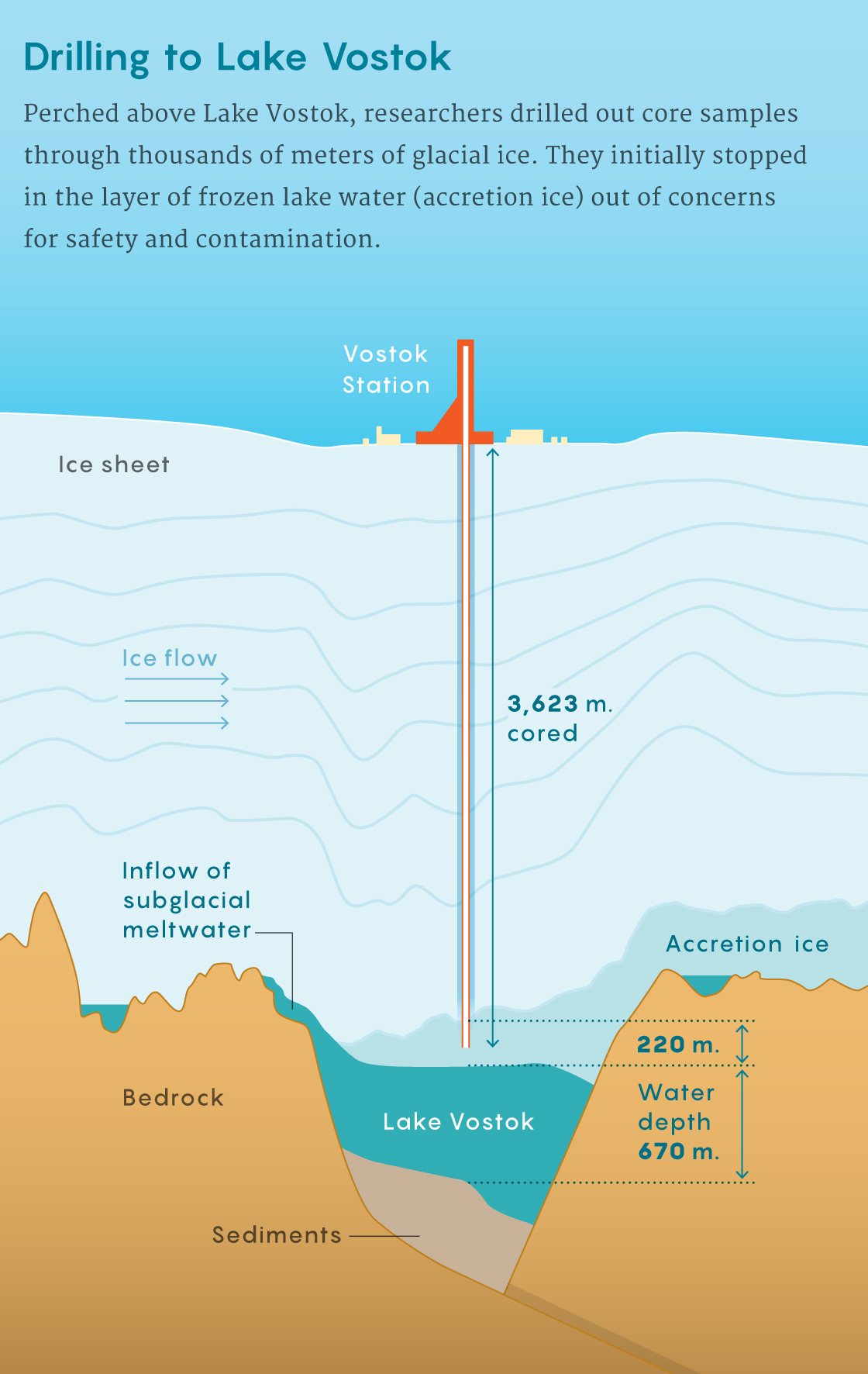
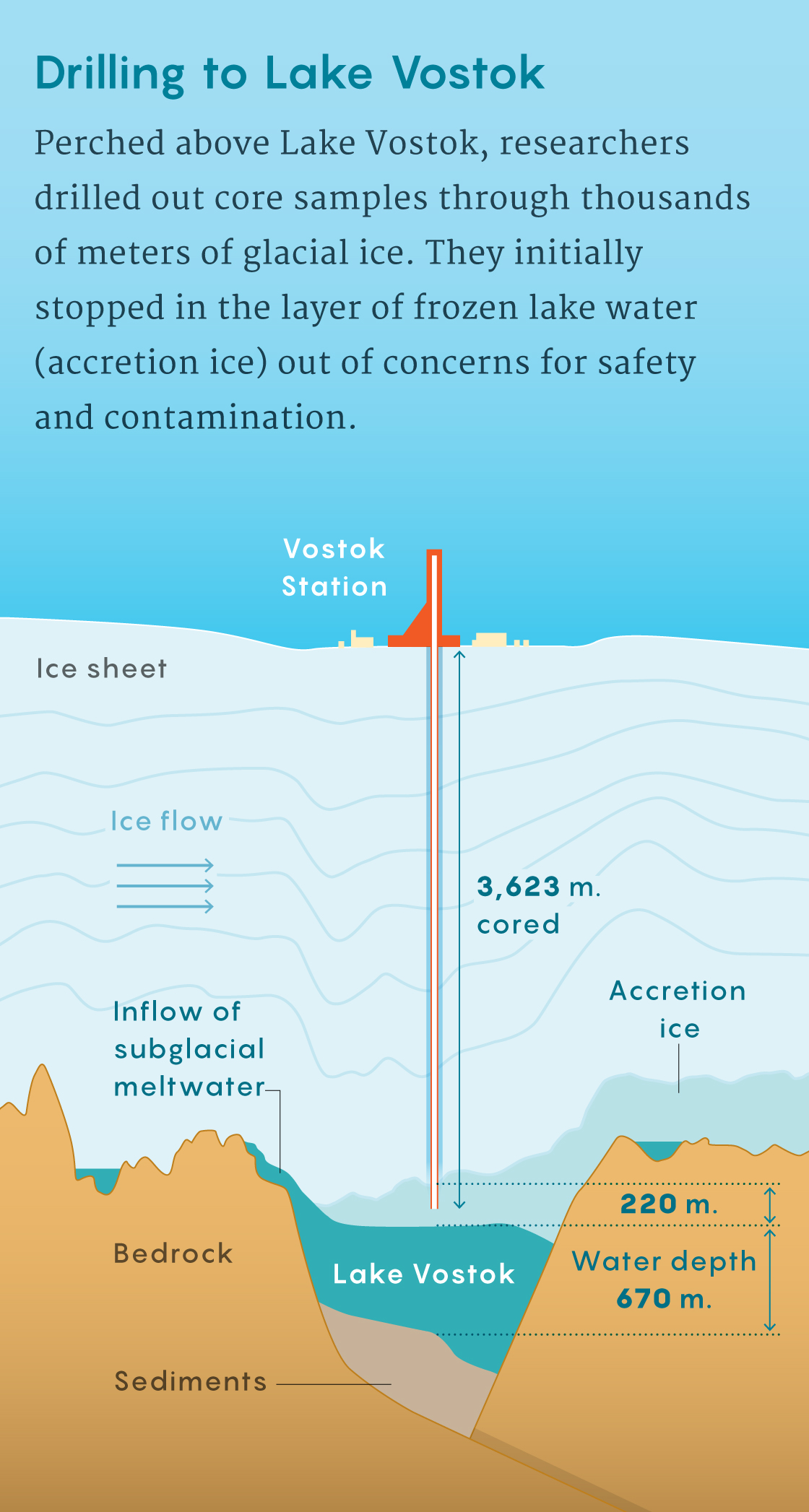
Samuel Velasco/Quanta Magazine; sources: M. Studinger and R.E. Bell, Lamont-Doherty Earth Observatory
When did you set your sights on Lake Whillans?
The Vostok paper got a lot of publicity and sent me on a whole new trajectory — looking for life under the ice sheet. In 2000, I was the U.S. representative at a Tokyo meeting of the Scientific Committee on Antarctic Research, on a subgroup charged with convincing funding agencies that these subglacial lakes were real. I called them “islands of fertility in the continent,” though some skeptics doubted that the lakes were really there. Others maintained that if the lakes did exist, we should leave them alone. It took several years to put together a solid case that we could and should sample these lakes, but the National Academy of Sciences finally endorsed this idea in 2009.
We decided to look at Lake Whillans and Lake Mercer, in part because they were covered with only about 3,000 feet of ice. We also had a lot of geophysical data on the water volumes and depths, and the fact that they’re both hydrologically active. The ice goes up and down as the lake fills and drains. The water flushes through them every decade, even though the lakes have been isolated from the atmosphere for tens of thousands of years. It took 14 days and 12 tractors to haul 1.2 million pounds of equipment, including the drill and labs, and 35,000 gallons of fuel from McMurdo Station to Lake Whillans — an approximately 600-mile trip across the Ross Ice Shelf.
We started drilling in late December 2012 through about 2,600 feet of ice. By January [2013], we had reached the lake, gotten our samples and secured our results: All the numbers we had extrapolated from the Vostok accretion ice — about 100,000 cells per millimeter — were confirmed in Lake Whillans. And this time we had solid proof — measurements from an actual lake sample, without having to rely on extrapolations. These are the moments you live for.
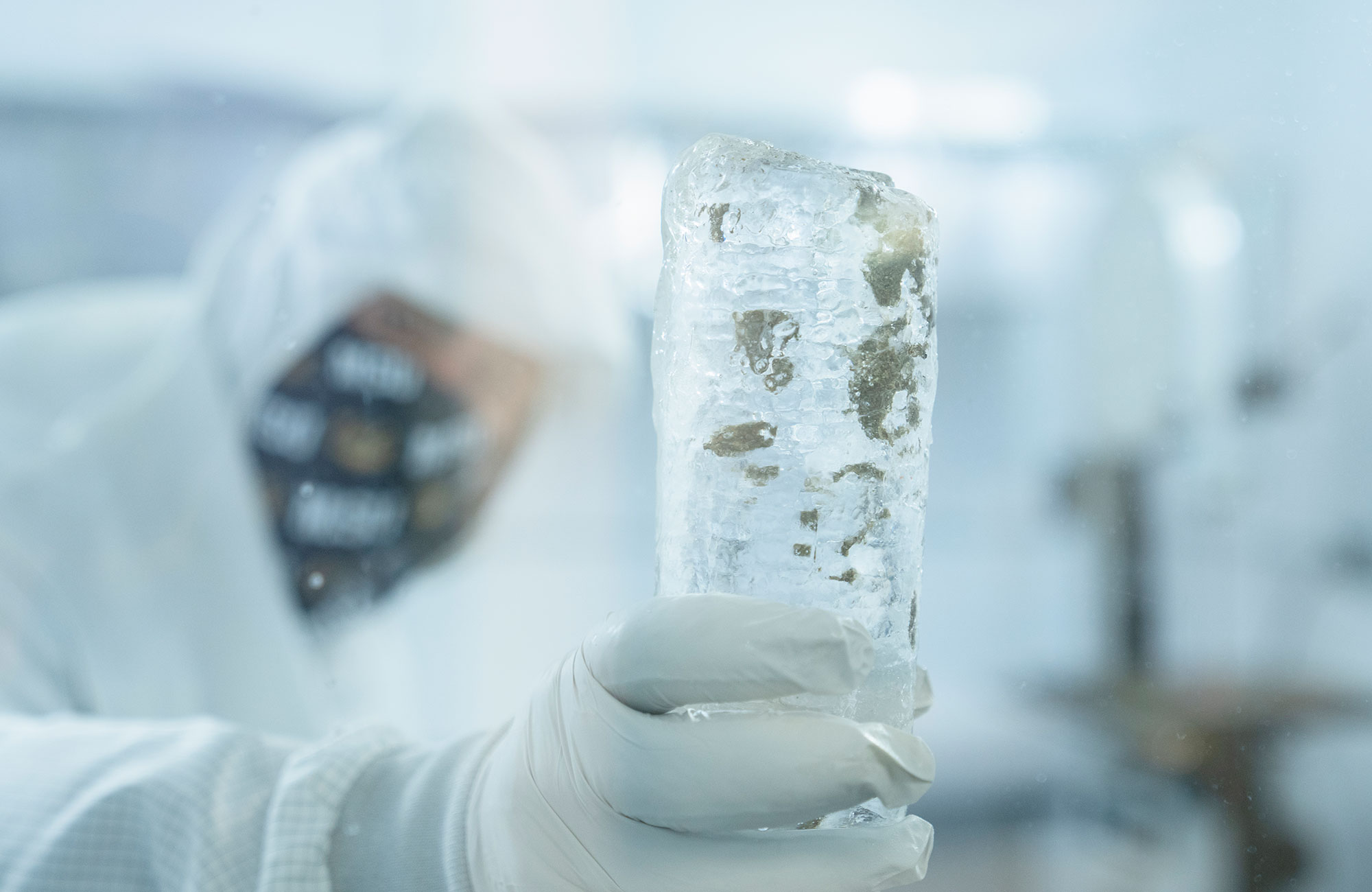
Ice core samples drilled out from above subglacial lakes offer clues to the regional history and sometimes contain living microorganisms.
Reid Morth for Quanta Magazine
What have your subsequent studies of Lake Whillans shown?
There’s no sunlight beneath half a mile of ice, so of course there’s no photosynthesis. Instead, we’ve identified a number of microbes called chemolithoautotrophs, which basically eat minerals for a living. They get their energy from the oxidation of inorganic compounds, and they get carbon from carbon dioxide. We also discovered that methane was diffusing upward from the sediments, fueling bacteria that oxidize methane for energy.
Now, in a 2020 paper with Trista Vick-Majors [a microbial ecologist and former student now at Michigan Technological University], we learned that these subglacial lakes, Lake Whillans in particular, are literally feeding the oceans. We know that water can be trapped under glaciers in lakes or streams for a long time, but it eventually goes into the ocean. Lake Whillans drains every 10 years or so, and our geophysics teams have given us a pretty clear picture of the channels from Whillans and other lakes that flow into the Southern Ocean. It’s kind of like the Mississippi Delta with 3,000 feet of ice on it. We sampled roughly 6 miles out from where the Whillans’ flow meets the sea beneath the Ross Ice Shelf. And we found that enough nutrients [including carbon, nitrogen, phosphorus and iron] are being discharged from the lake to support a microbial ecosystem in the ocean waters below the ice. No one imagined that was possible.
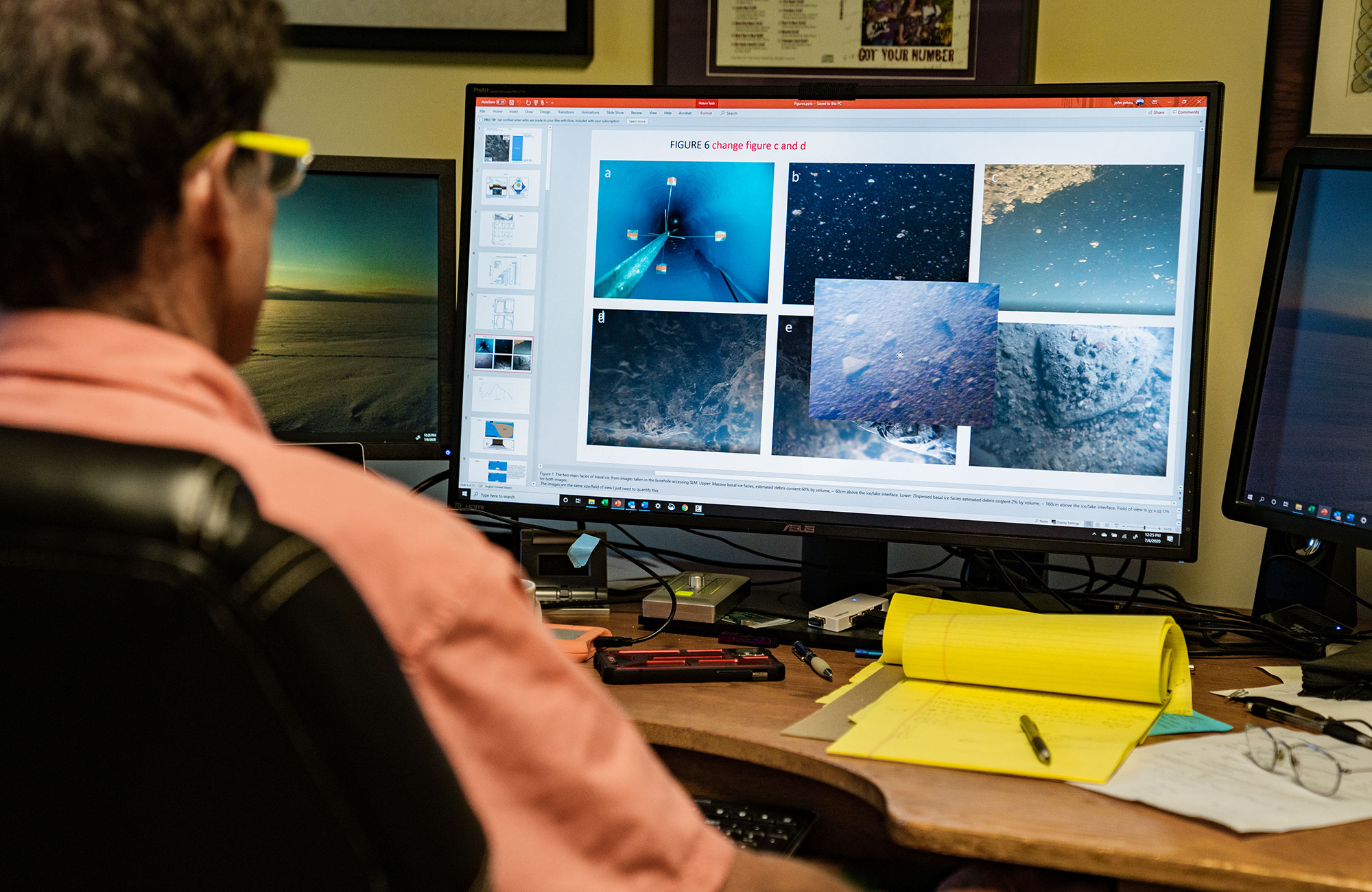
Probes reaching down the boreholes into the subglacial lakes send back images that reveal the habitat of the organisms under the ice.
Reid Morth for Quanta Magazine
How was Lake Mercer like or unlike Lake Whillans?
We drilled into Lake Mercer last year, going through about 3,500 feet of ice, and we found life there, too. But it’s different from what we see in Whillans, and the chemistry and dissolved oxygen levels are different. Cell density in Mercer is approximately 10 times lower. It’s not as productive as Whillans, which is three times saltier. Mercer gets a third of its water from East Antarctica, whereas Whillans gets most of its water from West Antarctica.
We’re trying to see how that influences their geochemistry and nutrients, and how life has adapted to the different conditions. But the most important thing is that we’ve now shown that there is life in two subglacial lakes, both of which have been directly sampled. Having two cases is critical. That should dispel any doubts.
How did you get involved with NASA and the question of life elsewhere in the solar system?
During my first trip to Antarctica in 1984, I was at a lake at a New Zealand field camp when Chris McKay, a researcher from NASA Ames, showed up. He’s an awesome scientist and the first card-carrying exobiologist I ever met. We talked about permanently ice-covered lakes and how they might exist on Mars. That’s how it started, and over time I got more involved. For example, I got on a NASA working group that helped design how core samples will be taken, stored and retrieved on the Mars 2020 mission. My colleagues and I began putting robots with samplers into the Dry Valley lakes.
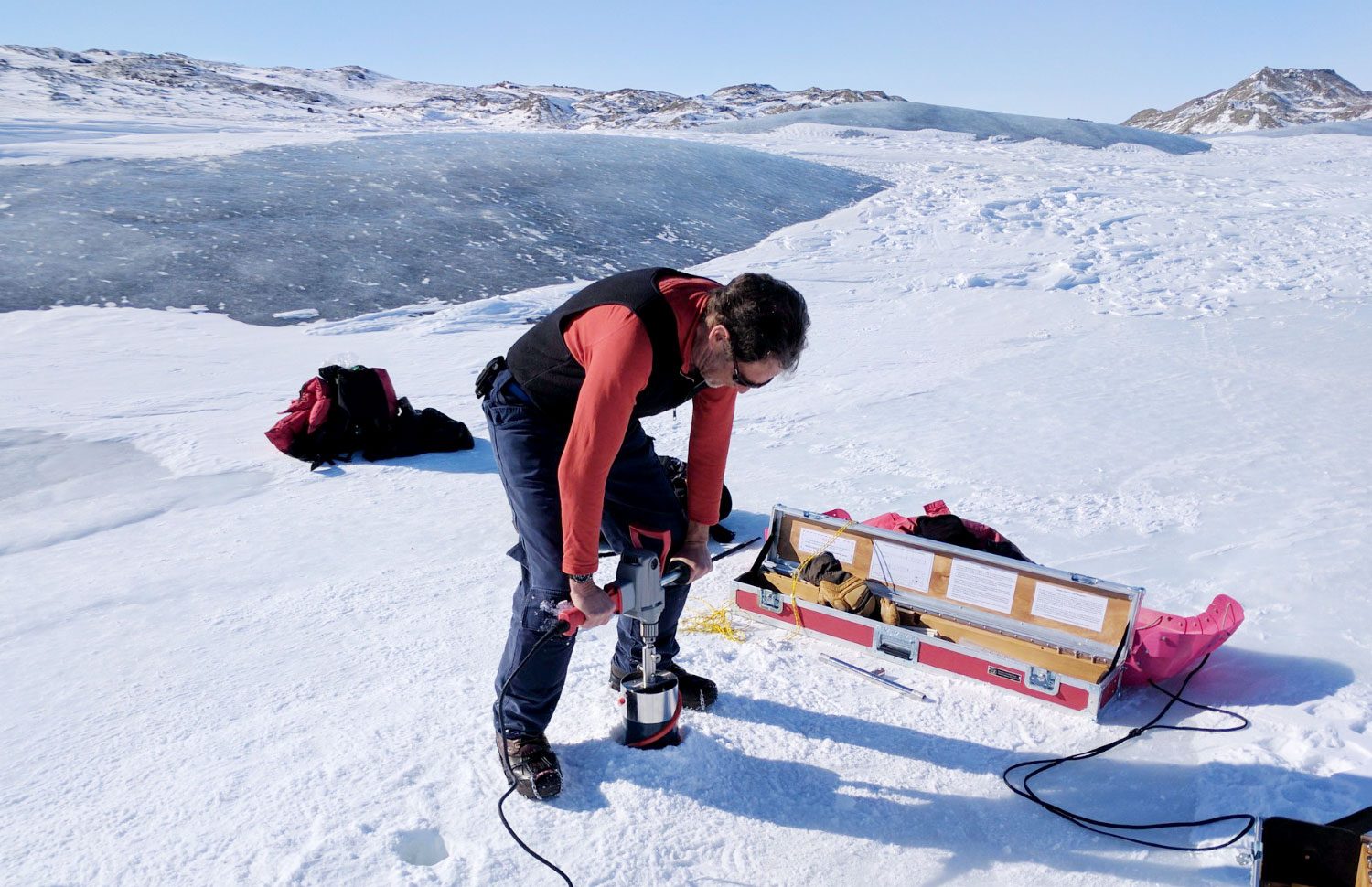
Priscu drills out an ice core in Greenland, where he and Jet Propulsion Laboratory researchers are developing an autonomous drill for deployment during future expeditions to Europa.
Courtesy of John Priscu
In the last paragraph of our 1999 Science paper on Lake Vostok, we wrote: “Microbes within a liquid water habitat deep below a frozen surface provide an analog for possible life on Europa.” And in a 2012 paper with Kevin Hand of JPL, we expanded on the idea of Vostok as a model for the Europan ocean and proposed that life-detection equipment be included inside an ice drill. In 2017 and 2019, we went to the Greenland ice sheet to test a drill you could take to Europa. We’d drill down about a meter, scan the borehole for organic matter, and then drill down another meter, looking for life as we went. It worked well, but our goal now is to make it fully autonomous.
NASA has kept me involved in developing a drilling system for Europa, because I know the problems you can encounter. The ice thickness on Europa is at least 6 miles, more than twice that of Vostok. Getting into the ocean there would be an incredible technological feat, which probably won’t happen in my lifetime. But we could get a lander down. And if you look for chaotic ice patterns, you might see places where there are water volcanoes. You want to go somewhere where there are signs of the sub-ice ocean erupting closer to the surface.
How much have things changed since your first visit to Antarctica?
In the early ’80s, I remember writing a proposal to study the interactions and ecology of microorganisms. There was nowhere to submit that proposal. I was told that microorganisms are not part of ecology. Now there are dozens of journals in microbial ecology. And the work we’ve done regarding microbes in ice- and glacier-covered lakes has changed the way we view one of the continents on Earth, while at the same time giving us clues as to what we may see in the outer solar system.




